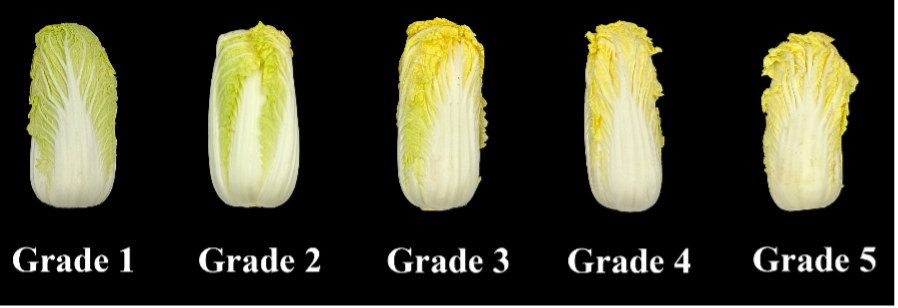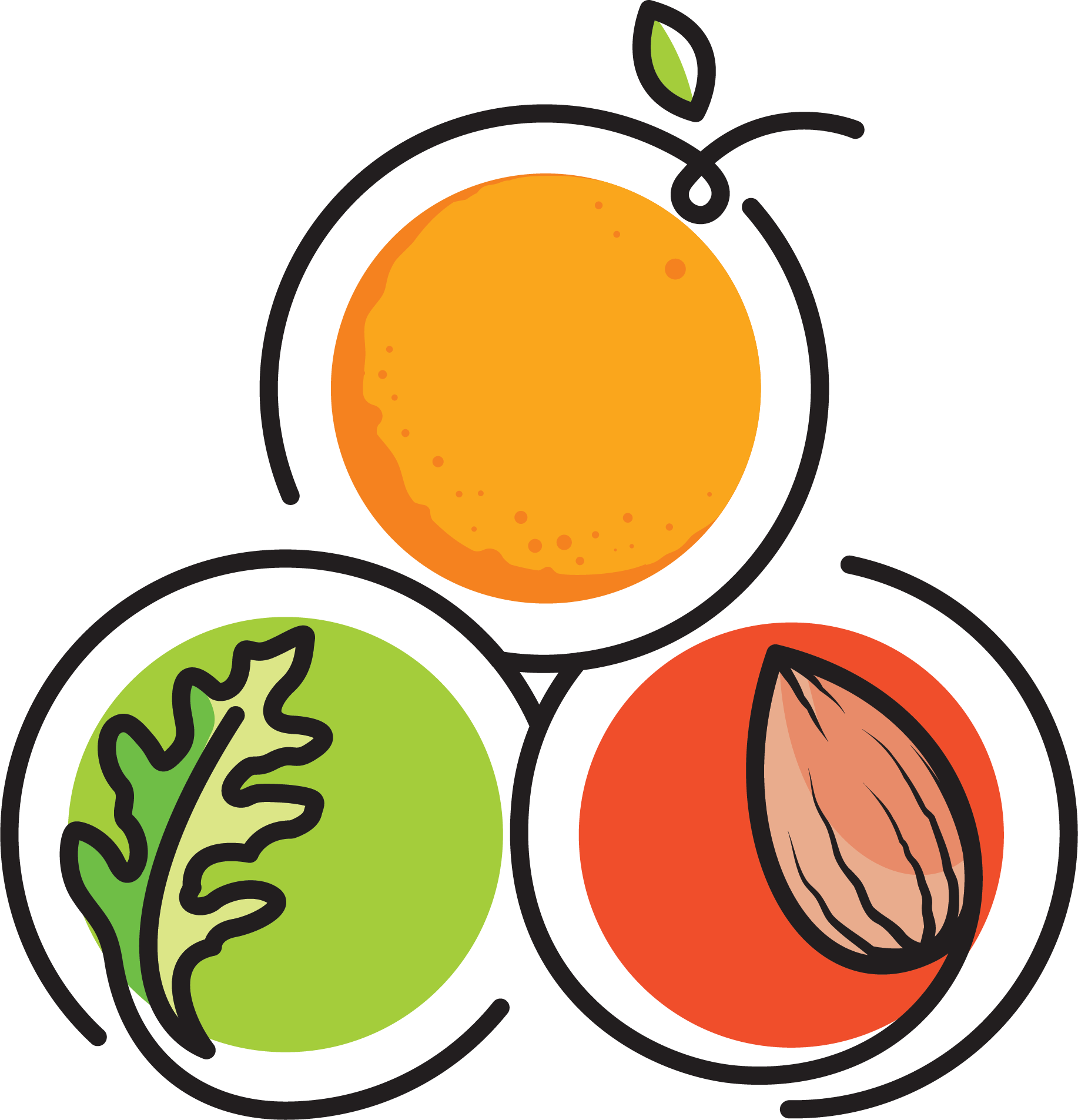Product Description
Last updated on April 2025
Índices de madurez
Height of 30-50 cm (11.8-19.7 in), diameter of approximately 20-35 cm (7.9-13.8 in), net weight of approximately 1.5-3.5 kg (3.3-7.7 lb) (Chinese cabbage); Height of 20-30 cm, diameter of roughly 10-15 cm (3.9-5.9 in), net weight of approximately 0.3-0.5 kg (0.7-1.1 lb) (baby Chinese cabbage).
The leaves are glossy and have a spotless, smooth surface.
The leaves are tightly wrapped, with no apparent voids or looseness, but appear shriveled in their borders. However, Chinese cabbage varieties grown in spring and summer may have looser leaves with a less compact heart.
Leaves are tightly wrapped into a bundle, and the color is bright and uniform. The outer leaves of Chinese cabbage are dark to light green, while the heart is pale green to white. Baby Chinese cabbage has outer leaves that are light to pale green, with the heart being pale to light yellow.
There are no apparent signs of pests or disease spots on the leaves.
The leaves are sturdy, full, and elastic.
Light plant fragrance and no odor.
The roots are dry with no obvious signs of decay.
The pesticide residue level should comply with relevant food safety standards.

Figure 1. Quality grading of freshly harvested baby Chinese cabbage. Five distinct grades are shown, ranging from Grade 1 (leftmost), representing the highest quality with compact heads, vibrant green leaves, and minimal defects, to Grade 5 (rightmost), representing the lowest quality with loose or damaged heads, discoloration, and visible defects. Photo Credit: Postharvest Team, Jiangsu Academy of Agricultural Sciences (JAAS), China.
Manejo y almacenamiento poscosecha
The optimal storage temperature for Chinese cabbage is 0°C (32°F), allowing for 2 to 3 months of storage, depending on the variety. However, storing at 0°C increases the risk of freeze damage; therefore, the recommended storage temperature is 1 to 2°C (33.8 to 35.6°F). Hydro-vacuum initial cooling is the most effective method, with an ideal final temperature of 4°C (39.2°F) and a final pressure of 0.6 kPa. However, conditions may vary depending on the equipment used.
25°C (77°F): 20-50 mg CO2/(kg·h);0°C (32°F): 1-5 mg CO2/(kg·h)
The respiration rate varies widely and is closely related to the season and time of harvest.
Chinese Cabbage is highly sensitive to ethylene, which can cause leaf yellowing, increased senescence, and decay. Exposure to 1 ppm of ethylene for 24 h can lead to leaf detachment.
>95%
Ethylene production rates are generally low. It's 0.5-3.5 μL/(kg·h) at 25°C (77°F).
Controlled atmosphere with 1-4% oxygen and 1% carbon dioxide at 0-1°C (32-33.8°F) can extend storage life to 3-5 months. However, the optimal conditions may vary depending on the variety.
Desórdenes
Black spots of varying sizes frequently appear on the outer leaves of Chinese cabbage and can spread to the inner leaves without causing visible decay. The underlying mechanism remains unclear but may be linked to cultivation conditions. Improper storage conditions, such as elevated temperatures, can worsen this issue.

Figure 2. Black spots on Chinese cabbage stem. The image highlights the presence of dark discolorations on the stem. These black spots can impact the product’s overall quality and shelf life. Photo Credit: Postharvest Team, Jiangsu Academy of Agricultural Sciences (JAAS), China.
Freezing Injury. The freezing point of Chinese cabbage is -0.9°C (30.38°F). Storing it at 0°C (32°F) increases the risk of freezing injury. Early symptoms include translucent, water-soaked spots or areas, typically starting on the outer leaves. Affected tissues deteriorate, often with pathogen invasion, leading to leaf or head rot along with the development of sour or putrid odors and flavors.

Figure 3. Frost-damaged Chinese cabbage leaf. This image illustrates the symptoms of freezing injury, with discoloration and translucent, water-soaked spots appearing on the outer leaves. Photo Credit: Postharvest Team, Jiangsu Academy of Agricultural Sciences (JAAS), China.
Physical Injury. Improper handling during harvest, compression during stacking and transport, vibration and impacts during shipping, and poor processing or packaging can damage the leaves. Injuries provide entry points to pathogens and increase the Cabbage's susceptibility to wilting and discoloration.

Figure 4. Mechanically damaged baby Chinese cabbage. This image shows physical damage to the outer leaves, often caused during harvest or postharvest handling. Photo Credit: Agricultural Products Preservation Technology and Equipment Innovation Team, JAAS.
Callus Formation and Lateral Root Growth. During storage, callus tissue forms at the root cut surface through cell division, appearing as a hard, white, or pale-yellow growth. This callus tissue prevents moisture loss and acts as a barrier against pathogen invasion but negatively impacts the product's appearance. Callus formation also consumes energy and nutrients, potentially accelerating its overall degradation. If roots are left intact and humidity is high, lateral root growth may also occur.

Figure 5. Callus formation and lateral root growth in baby Chinese cabbage. The left image shows callus formation at the root cut surface. The right image displays lateral root growth at the root cut surface. Photo Credit: Postharvest Team, Jiangsu Academy of Agricultural Sciences (JAAS), China.
Bacterial Soft-Rot. Caused by Pectobacterium carotovorum and Pseudomonas spp., it is the most common postharvest disease in Chinese Cabbage. Early symptoms include water-soaked lesions that expand into soft rot areas. The lesions change color from light to dark brown and emit a foul, decayed odor. In advanced stages, the internal tissue softens and becomes water-soaked, potentially causing the entire plant to collapse.

Figure 6. Bacterial soft rot in baby Chinese cabbage. This image highlights symptoms of bacterial infection, including a dark water-soaked lesion. Photo Credit: Postharvest Team, Jiangsu Academy of Agricultural Sciences (JAAS), China.


